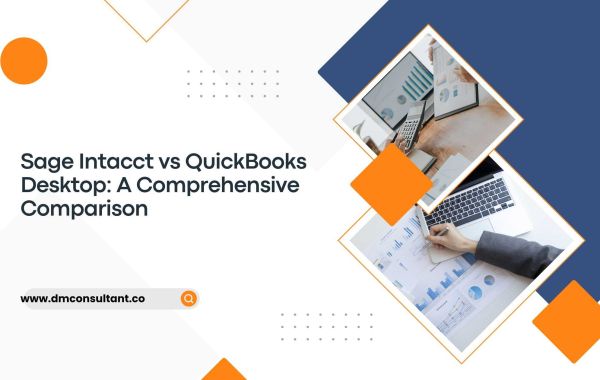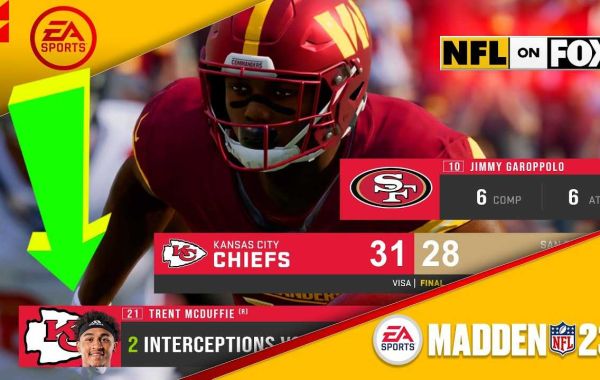Choosing the right accounting software is crucial for businesses of all sizes. Two of the most popular options on the market are Sage Intacct and QuickBooks Desktop. While both platforms offer robust features, they cater to different business needs and preferences. This comprehensive comparison will explore key aspects of Sage Intacct and QuickBooks Desktop, helping you make an informed decision for your business.
Introduction
Sage Intacct vs QuickBooks Desktop are both well-established accounting solutions. QuickBooks Desktop, a product of Intuit, has been a staple for small and medium-sized businesses for decades. Sage Intacct, on the other hand, is a cloud-based financial management solution that has gained popularity among larger enterprises and organizations with more complex accounting needs.
Key Differences
1. Deployment and Accessibility
QuickBooks Desktop:
- Deployment: Installed locally on a computer or server.
- Accessibility: Limited to the device(s) where it is installed. Remote access requires additional setup and costs.
- Suitability: Best for businesses that prefer on-premises solutions and do not require constant remote access.
Sage Intacct:
- Deployment: Cloud-based, accessible via any internet-enabled device.
- Accessibility: Provides real-time access from anywhere, ideal for businesses with remote teams or multiple locations.
- Suitability: Perfect for businesses that need flexibility and remote accessibility.
2. Pricing
QuickBooks Desktop:
- Pricing Structure: One-time license fee with optional annual updates. Different versions (Pro, Premier, Enterprise) come at varying costs.
- Additional Costs: Extra charges for add-ons, payroll services, and remote access.
- Cost Efficiency: Suitable for businesses looking for a lower upfront cost.
Sage Intacct:
- Pricing Structure: Subscription-based, typically paid monthly or annually.
- Additional Costs: Pricing can vary based on the number of users and additional modules.
- Cost Efficiency: May be more expensive initially but offers extensive features and scalability.
3. Features and Functionality
QuickBooks Desktop:
- Core Features: Invoicing, expense tracking, payroll, reporting, and inventory management.
- Advanced Features: Industry-specific versions (e.g., manufacturing, retail) provide tailored features.
- Limitations: Limited scalability and fewer advanced features compared to cloud-based solutions.
Sage Intacct:
- Core Features: Comprehensive financial management, accounts payable/receivable, cash management, and general ledger.
- Advanced Features: Multi-entity consolidation, real-time dashboards, robust reporting and analytics, and extensive third-party integrations.
- Strengths: Highly scalable, suitable for businesses with complex accounting needs.
4. User Experience
QuickBooks Desktop:
- Interface: User-friendly with a familiar desktop application feel.
- Learning Curve: Generally easier for users familiar with desktop applications.
- Support: Access to extensive online resources, community forums, and customer support.
Sage Intacct:
- Interface: Modern, intuitive web-based interface with real-time dashboards.
- Learning Curve: May require more training, especially for users transitioning from desktop-based software.
- Support: Dedicated support team, extensive online resources, and training programs.
5. Integrations and Add-Ons
QuickBooks Desktop:
- Integrations: Supports integration with various third-party applications, but fewer options compared to cloud-based solutions.
- Add-Ons: Range of add-ons available for specific needs (e.g., payroll, time tracking).
Sage Intacct:
- Integrations: Extensive integration capabilities with other cloud-based applications (e.g., Salesforce, Bill.com).
- Add-Ons: Wide range of modules available to enhance functionality (e.g., project accounting, contract management).
6. Scalability
QuickBooks Desktop:
- Scalability: Limited scalability; best suited for small to medium-sized businesses.
- Growth: As businesses grow, they may need to transition to more robust solutions.
Sage Intacct:
- Scalability: Highly scalable, designed to grow with businesses.
- Growth: Suitable for businesses of all sizes, from small enterprises to large organizations with complex needs.
7. Security
QuickBooks Desktop:
- Security: Security depends on the user's IT infrastructure. Regular backups and updates are essential.
- Control: More control over data since it's stored locally.
Sage Intacct:
- Security: Advanced security features, including encryption, multi-factor authentication, and regular updates.
- Control: Data is stored in the cloud, with high-level security protocols maintained by Sage Intacct.
Conclusion
Both Sage Intacct and QuickBooks Desktop offer powerful accounting solutions, but they cater to different business needs. QuickBooks Desktop is ideal for small to medium-sized businesses looking for a reliable, cost-effective desktop solution. It provides essential accounting features with a user-friendly interface and the flexibility of industry-specific versions.
Sage Intacct, on the other hand, is better suited for businesses that require a scalable, cloud-based solution with advanced features and robust integration capabilities. Its real-time access, extensive reporting, and flexibility make it a strong contender for larger organizations or those with complex accounting requirements.
Ultimately, the choice between Sage Intacct and QuickBooks Desktop will depend on your business's specific needs, budget, and growth plans. By carefully evaluating the key differences and strengths of each platform, you can make an informed decision that best supports your accounting and financial management needs.
FAQs for "Sage Intacct vs QuickBooks Desktop"
Q: What are the main differences between Sage Intacct and QuickBooks Desktop?
A: Sage Intacct is a cloud-based financial management solution designed for scalability and advanced functionality, while QuickBooks Desktop is an on-premises accounting software tailored for small to medium-sized businesses. Sage Intacct offers extensive integration capabilities and real-time access, whereas QuickBooks Desktop is known for its user-friendly interface and industry-specific versions.
Q: Which software is better for small businesses?
A: QuickBooks Desktop is generally better suited for small businesses due to its ease of use, lower upfront cost, and essential accounting features. Sage Intacct is more suitable for growing businesses or those with complex accounting needs.
Q: Does Sage Intacct offer more features than QuickBooks Desktop?
A: Yes, Sage Intacct generally offers more advanced features, including multi-entity consolidation, real-time dashboards, robust reporting, and extensive third-party integrations. QuickBooks Desktop provides core accounting features and industry-specific functionalities but is less comprehensive compared to Sage Intacct.
Q: Can both Sage Intacct and QuickBooks Desktop handle multi-currency transactions?
A: Yes, both Sage Intacct and QuickBooks Desktop can handle multi-currency transactions, but Sage Intacct offers more advanced and automated multi-currency features suitable for businesses with extensive international operations.
Q: How do the pricing models differ between Sage Intacct and QuickBooks Desktop?
A: QuickBooks Desktop follows a one-time license fee with optional annual updates, whereas Sage Intacct uses a subscription-based pricing model, typically paid monthly or annually. Sage Intacct’s pricing can vary based on the number of users and additional modules needed.








